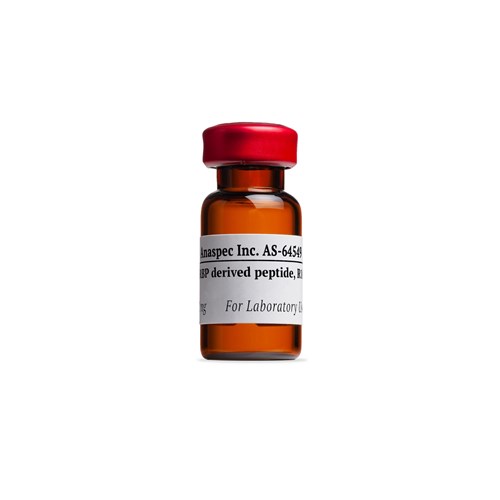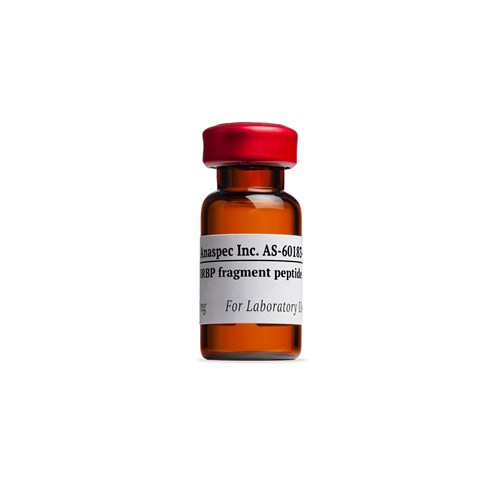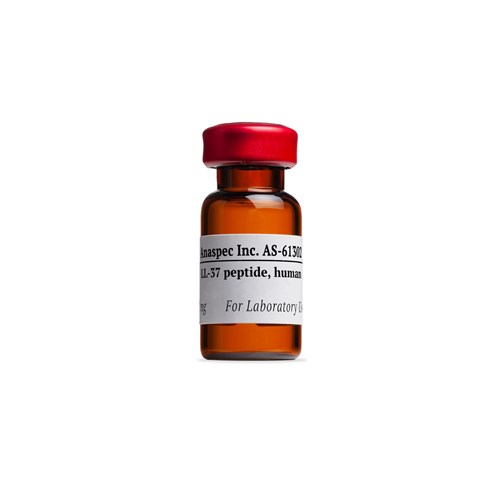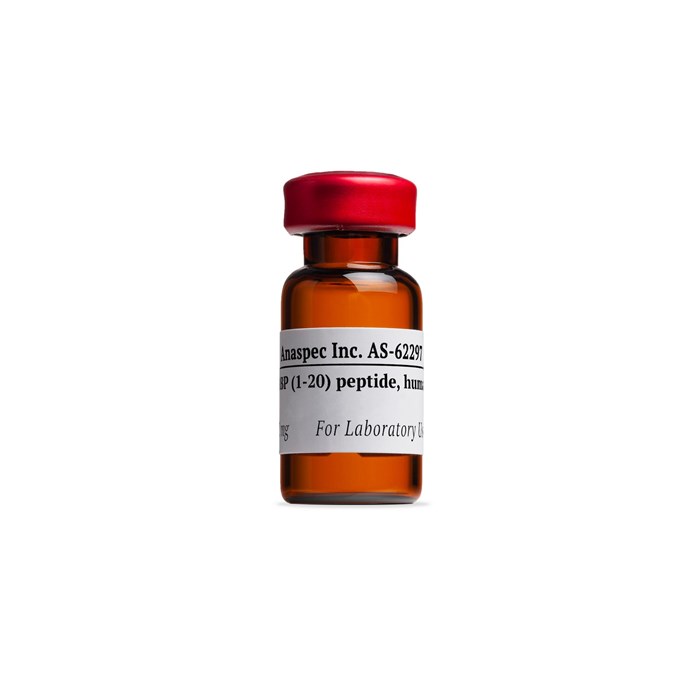IRBP (1-20), human - 1 mg
- Cat.Number : AS-62297
- Manufacturer Ref. :
-
Availability :
In stock
This peptide is a 1 to 20 amino acid fragment of the interphotoreceptor retinoid binding protein (IRBP). IRBP is a 140-kDa glycolipoprotein residing in the interphotoreceptor matrix between the neural retina and the retinal pigment epithelium. Human IRBP peptide 1-20 contains a major epitope for the H-2b haplotype. Immunization with IRBP (1 – 20) induces T-cell–mediated experimental autoimmune uveoretinitis (EAU) disease. The pathology of disease induced by the peptide, or by adoptive transfer of cells specific to the peptide, is similar to that induced by the whole IRBP protein.
Specifications
| Chemistry | |
| Sequence one letter code |
|
|---|---|
| Sequence three letter code |
|
| Molecular Formula |
|
| Molecular Mass/ Weight |
|
| Modification | |
| Conjugation |
|
| Quantity & Purity | |
| Purity |
|
| Storage & stability | |
| Form |
|
| Storage Conditions |
|
| Activity | |
| Biomarker Target | |
| Research Area | |
| Sub-category Research Area | |
| Usage |
|
| Source | |
| Source / Species |
|
| Codes | |
| Code Nacres |
|
You may also be interested in the following product(s)


IRBP, Interphotoreceptor Retinoid Binding Protein Fragment

Citations
Role of DAF in protecting against T-cell autoreactivity that leads to experimental autoimmune uveitis.
Invest Ophthalmol Vis Sci. . 2009 May 14 ; 50(8) 3778 | DOI : 10.1167/iovs.08-3264
- F. An
- et al
A humanized model of experimental autoimmune uveitis in HLA class II transgenic mice
J Clin Invest. . 2003 Apr 15 ; 111(8) 1171 | DOI : 10.1172/JCI200315155
- G. Pennesi
- et al
